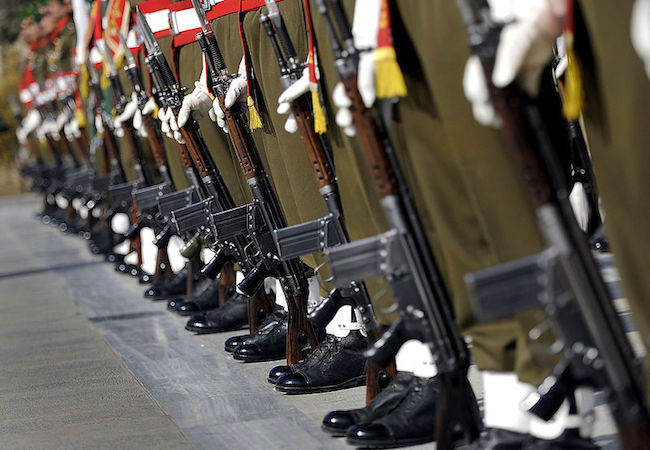
By Maimuna Ashraf
The former US President Ronald Reagan, while deliberating upon the goal of defensive technologies stated “What if free people could live secure in the knowledge that their security did not rest upon the threat of instant U.S. retaliation to deter a Soviet attack, that we could intercept and destroy strategic ballistic missiles before they reached our own soil or that of our allies?” The statement indicated the steadfastness of defense system in order to ensure shelter however the realities have changed after decades about the BMDs in the contemporary environment especially about the South Asian region. The strategic stability of South Asian landscape revolves around the corollary of nuclear deterrence. The stable or unstable deterrence influence the security dilemma, nuclear threshold, regional asymmetry, nuclear employment and peace accordingly. Pakistan and India experienced the effectiveness of nuclear factor and strategic equation in the region. However, few recent developments in the region has put the nuclear optimist assessment about the nuclear weapon’s impressive contribution and impression of deterrence equilibrium in constructing strategic stability, under stress.
The BMD system consists of sensors to detect and track the missile/warhead and a guided missile, called interceptor, to intercept and destroy the incoming enemy ballistic missiles by using the “hit-to-kill,” direct impact technologies—i.e., by “hitting a bullet with a bullet.” In nuclear factor, not the number of nuclear weapons but their credibility and survivability matter unless influenced by other features having direct relevance with deterrence like transition in military doctrines, Ballistic Missile Defense (BMD) system, Multiple Independently Targeted Reentry Vehicles (MIRVs) and assured second strike capability. Thus status quo remains stable if strategic equilibrium is in play; the concept of mutual destruction functions and the nuclear opponents has reciprocal annulment of options for war at any level. This piece aims to specifically analyze the recent Indian test of supersonic interceptor missile in pursuit of full-fledged and multi-layered BMD system in a strategic environment which is greatly complex, unstable and unpredictable.
McNamara said “assured deterrence is the very essence of the whole deterrence concept. We must possess an actual assured destruction capability and that capability must be credible”. Thus, the credibility and capability are keystones of nuclear strategy while it remains fact that rational deterrence rests on mutual vulnerability or mutual assured destruction (MAD). The ‘iron dome’ BMD reduces India’s vulnerability to Pakistani ballistic missiles strike thus challenges the credibility of Pakistan’s nuclear deterrent. It also undercuts Pakistan’s offensive posture yet strengthens India’s defensive capabilities. However to intact South Asian deterrence equilibrium and strategic stability, strong offense is better than a strong defense in region.
Two interceptor missiles, the Prithivi air defence missile and the Advanced Air Defence (Ashwin) missile are capable of intercepting missiles at altitudes of 50 – 80km and 30kms respectively. India lately successfully test fired the supersonic interceptor missile capable of destroying any incoming ballistic missile. Pragmatically, successful test does not imply effective response in an area of operation because BMD can intercept few incoming missiles but might not defeat all of them. Moreover the BMD system has yet to prove militarily and operationally effective against ballistic missiles.
Missile defense is not completely foolproof and does not provide a complete protection cover. However, this new system added in the military arsenal has the potential to trigger a conflict due to the false sense of security. Arguably it can also facilitate Indian conventional adventurism like Cold Start. The false sense of security can trigger a nuclear conflict despite a functional balance of power or nuclearized environment because the perception to be protected by BMD can convince India to take greater risk that will transform rational actor-model into irrational-actor-model resulting in a major catastrophe.
The worrisome reaction of Pakistan’s nuclear establishment over the introduced of Indian BMD is not naive. It is argued by Pakistani nuclear optimist that Pakistan should consider technical countermeasures to defy the instability and to ensure its capability to hit Indian strategic target. The likelihood of Pakistan to acquire technological or financial assistance for its own BMD system is not viable. Pakistan can acquire BMD from US, Russia and China, with US being the least available option; however the option to produce its own ballistic defense is limited due to economic constraints. Thus resultantly Pakistan would be investing in qualitative and quantitative advancement of missile technologies (i.e. ballistic and cruise). Consequently, Pakistan can develop large number of nuclear warheads, ballistic and cruise missiles. Another effective option would be to pursue Multiple Independently Targetable Re-entry Vehicles (MIRVs). Reportedly, Pakistan developed TNWs in response to BMD.
Pakistan will opt for qualitative and quantitative enhancement of nuclear force thus the introduction of BMD would again contribute to the unhealthy arms race in South Asia. Pakistan should also work on the sea based nuclear deterrent to ensure the survivability of its nuclear forces, and to have an assured second-strike capability. In the words of Stephen D. Weiner, “if the defense system does not have enough interceptors to shoot at all the incoming objects, it must be able to discriminate between decoys (nonthreatening object) and warheads. This discrimination process is not perfect and results in two types of errors: leakage (not shooting at warheads) and false alarms (shooting at decoys).”
There can be several policy options, first is to choose for a mix of qualitative and quantitative improvements to its nuclear force in order to overcome and defeat the Indian defences. An effective option could be to purposely fly the decoys to confuse the defense that in result will exhaust the supply of interceptors. Pakistan can work on penetration capabilities or counter-interceptor missiles to dodge or exploit the weaknesses of the missile defense interception system. For instance, Pakistan can employ ballistic and cruise missiles with stealth technologies to make the warheads undetectable. In addition, the development of supersonic missiles can outdo BMD with its speed and maneuverability.




